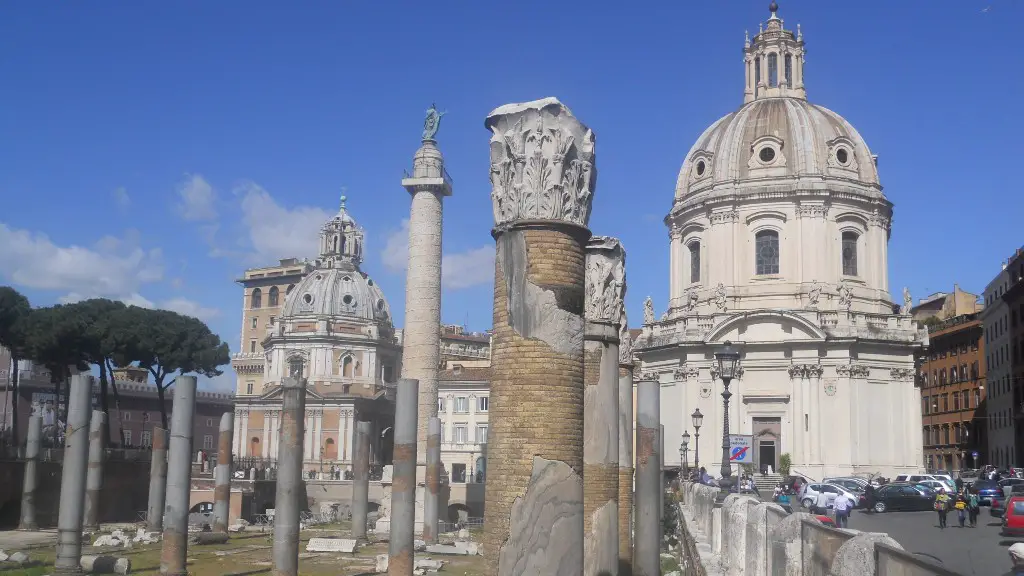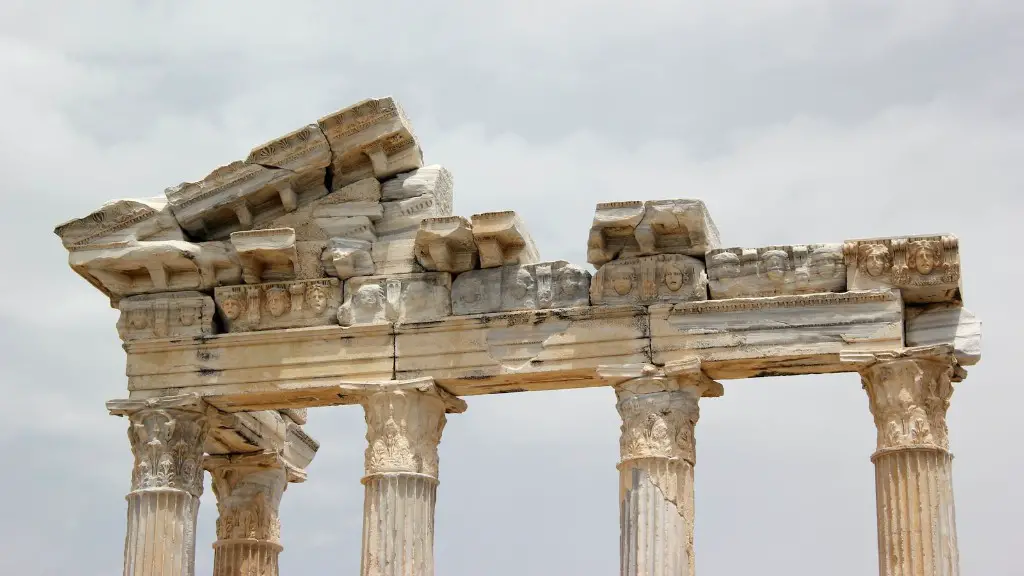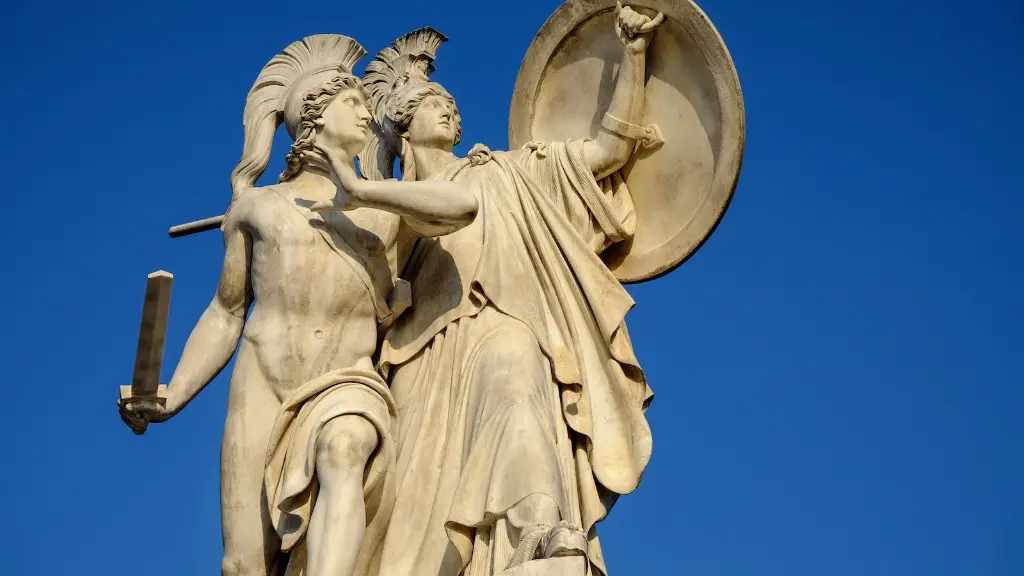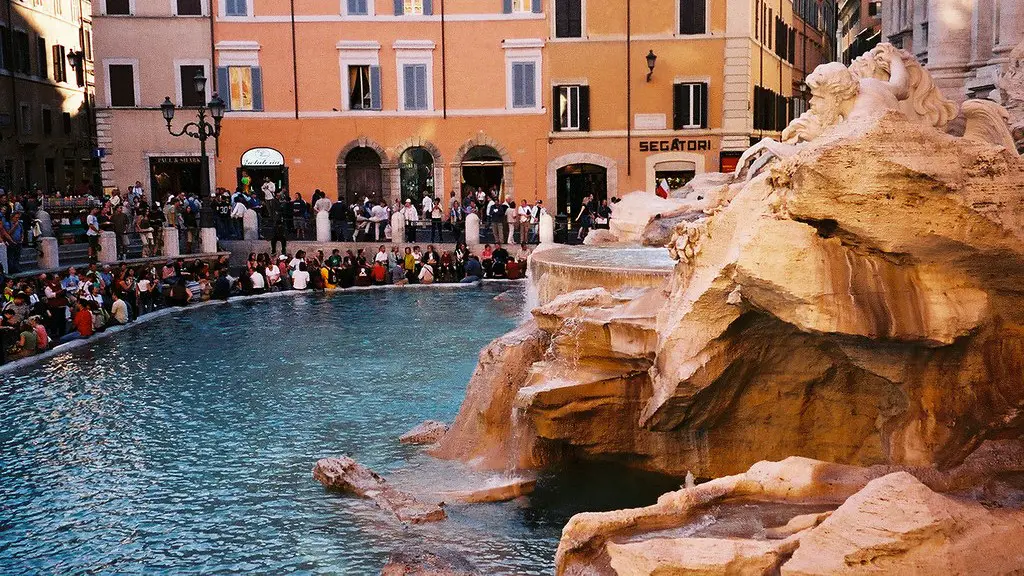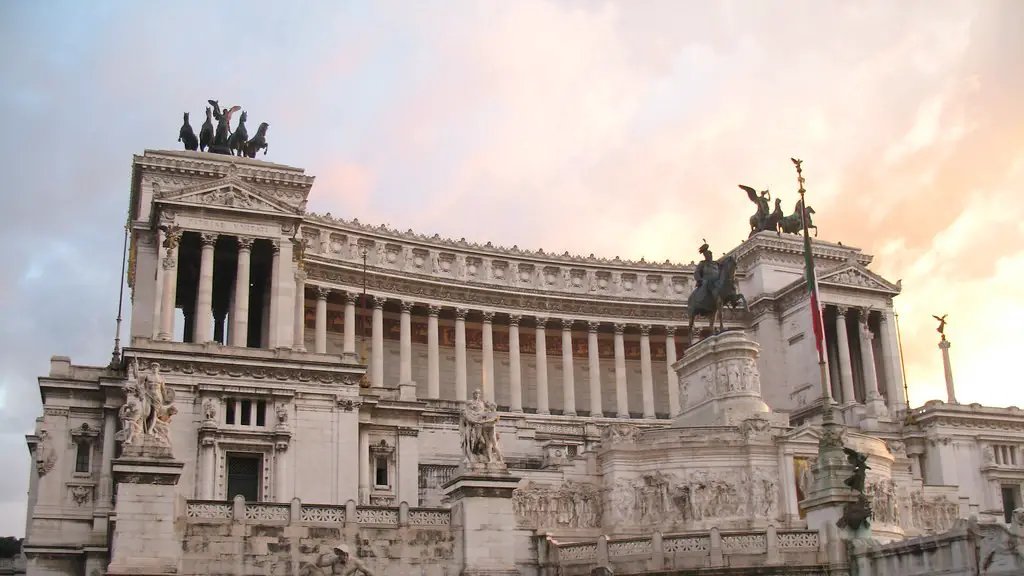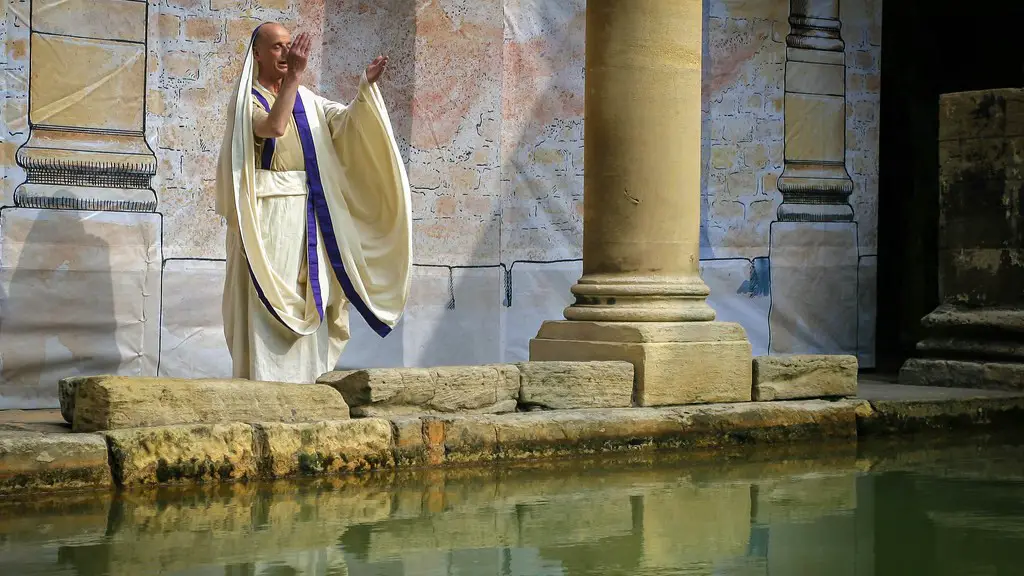The ancient Roman era was one of the most remarkable and influential time periods of human history. This period of time laid the foundation for much of the modern world that would be seen in centuries to come. During the ancient Roman Empire, Rome was the center of both the political and economic worlds of the Mediterranean, and the influence of Roman democracy, education and culture can still be seen today. From its establishment of laws and the development of modern government, to its stunning engineering feats, stunning architecture and contributions in the fields of art and philosophy, the ancient Roman Empire was truly one of a kind.
The first recorded Roman kingdom was said to be founded in 753 BC by Romulus, a son of the god Mars. Over the next centuries, it expanded and became the capital of Italy, eventually becoming a powerful governing force in the Mediterranean region. It was at this time that Rome established itself as a major power; they acquired control of the seas, built roads and aqueducts, and developed the military into one of the most powerful forces in the world. What made ancient Rome so unique to the time period was their constitution which exercised more rights for its citizens compared to other empires at the time.
The Roman way of life is best understood by the fact that its citizens valued traditions, discipline, order, and public welfare. Roman religion was largely based around gods and goddesses who were the source of stability and order. Religion played a major role in the development of Rome and the way things were conducted. Romans lived in communities and according to a strict set of rules and beliefs. They believed in the rule of law and adopted laws from Greek and other civilizations that had previously existed.
In terms of civic life, the ancient Roman world was full of public constructions that still exist today. The construction of roads was a major development; these roads connected Rome to the rest of the Italian Peninsula as well as other parts of the Mediterranean. These roads were extremely important for commerce, warfare, and travel. Roman aqueducts were a major advancement in engineering and were used to bring water and food to the city. Additionally, many other constructions such as arenas, monuments, and theaters were built to create a sense of public entertainment.
The culture of ancient Rome was largely defined by education and art. The public education system emphasized on grammar, literature, philosophy, and rhetoric. Art was also valued and produced great sculptures and paintings, along with mosaics and architectural engineering feats. Music was also popular in the time period and was used for entertainment as well as for ceremonies.
In conclusion, the era of the ancient Romans was one of significant importance in human history. It laid the foundation for much of the modern world that is seen today. Rome had a unique style of governing, unique customs and traditions, amazing engineering feats, and contributions in the arts. It truly was a one of a kind empire.
Political System
The political system of the ancient Roman world was designed on the basis of class. The three main classes of Roman society were the Patricians, the Plebeians, and the Freedmen. The Patricians were the wealthy nobles, while he Plebeians were farmers and the Freedmen were former slaves. Additionally, there were different governing branches such as the Senate, which consisted of 300 Patricians who made laws. Additionally, the Senate was a major factor in Roman government and it was responsible for appointing consuls and other officials.
In addition to the Senate, the Roman Republic had a representative assembly, known as the Centuriate Assembly. This assembly was divided into different social classes and was responsible for deciding on laws, electing officials, and making decisions. Additionally, it was during the Roman Republic that the basis of modern democracy was formed. Citizens had the right to vote, the right to a trial by jury, and the right to appeal. This was a major step forward in human history as it allowed citizens to have a greater voice in their government.
The Roman government was also based on military control. Every Roman citizen had to serve in their military at least until the age of twenty-six. It was divided into legions and infantry, both of which were heavily armed. Additionally, the Roman military became the most powerful force in the Mediterranean region, conquering many areas and establishing the Roman Empire.
Economy
The economy of the Roman Empire was based on agriculture and trade. The rich soil of the region enabled farmers to cultivate an assortment of crops such as wheat, barley, olives, legumes and figs. This agricultural production was then traded between other countries, becoming one of the most profitable industries. Additionally, Rome was the most powerful maritime nation in the Mediterranean and controlled the sea routes and provided protection to the traders coming in and out of the city.
The Roman economy also had a huge trading network. They managed to establish trade routes throughout the Mediterranean, which allowed them to import luxury goods and exotic materials. This included silver and gold, spices, ivory, and furs. Additionally, Rome managed to create a currency, the denarius, and this was widely used throughout the region.
Furthermore, slave labor was a major factor in the Roman economy. Slaves were widely used in the agricultural and industrial sectors. They were the main source of labor for the many factories, mines, and other industries in the Roman world. Additionally, slaves were used for domestic purposes and for entertainment, such as in gladiatorial games.
Architecture
The ancient Romans were renowned for their amazing architectural feats. They built a vast network of roads, aqueducts, and public entertainment arenas, which connected the different parts of the empire and provided amenities to the citizens. This construction has stood the test of time and continues to be an amazing sight to behold.
One of the most iconic structures of the Roman Empire is the Colosseum. This imposing structure was built between 70 and 72 CE, and it was the main venue for gladiatorial games. It contained 80 entrances, could seat up to 50,000 people, and was built on a foundation that was strong enough to support massive statues. The exterior was made of Travertine, while the interior was made of travertine bricks.
Additionally, the ancient Romans developed extensive baths complexes. These structures provided bathing facilities and public venues where citizens could meet and socialize. The baths complexes included the thermulae, which were the hot baths, and the frigidarium, which were the cold baths. These baths were vitally important for public health and hygiene.
Roman architecture also included villas, porticos, and temples. Villas were large residences for wealthy Romans, whereas porticos were arcades and passageways that linked public buildings and markets. Temples were established in honor of Roman gods and goddesses, and they featured ornate and grand facades.
Religion
Religion was an important part of the ancient Roman world. They had a polytheistic belief system, with gods and goddesses in charge of different facets of their lives. These gods and goddesses were largely based on Greek gods, such as Jupiter, Juno, and Minerva.
Roman religion was largely based around rituals and ceremonies. These ceremonies were usually conducted in a temple environment and typically consisted of sacrifices of animals, fruit, or wine. Additionally, religious festivals such as Saturnalia and Lupercalia were popular and celebrated with much vigor.
Roman religion also preached obedience to the gods and goddesses and a respect for authority. This was reflected in the way the Romans conducted themselves. Additionally, Roman religion had a significant influence on the laws and customs of the time period. For instance, marriage laws and other aspects of public life closely adhered to the laws of the gods.
Culture
The ancient Roman world was full of culture and art. This included literature, theatre, music, and more. Roman literature was largely divided into two categories – epic poetry and satire. Epic poetry was focused on Roman gods and goddesses and narratives, while satire was a form of literature that was designed to be comical and entertaining.
Theatre was also an important part of Roman culture. It was used as a form of entertainment, but also as a political tool. Poetry and comedy were highly popular forms of theatre in this period. Additionally, the Romans had their own unique style of music, which was largely based on the Greek styles.
Furthermore, the ancient Romans were avid art collectors. They collected artworks produced by both Greek and Roman artists and placed them in their homes and public buildings. Additionally, artworks were a reflection of the Roman way of life. Mosaics and other artwork could often be found in public baths and Mosaic floors found in villas depicted Roman gods, goddesses, and scenes from their lives.
